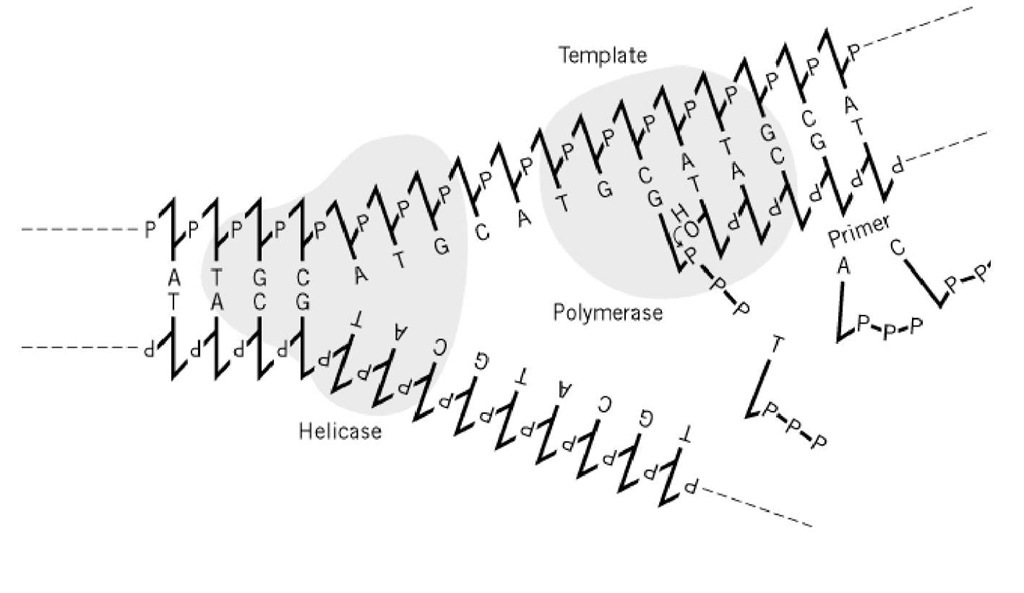A template is defined in the 1978 Webster’s New Collegiate Dictionary as a molecule (such as RNA) in a biological system that carries the genetic code for another molecule. Also, the 1995 Concise Oxford Dictionary, Ninth Edition describes a template as the molecular pattern governing the assembly of a protein, etc. According to these broad definitions, DNA is the template for DNA (in DNA replication) and for RNA (in transcription ), and RNA is the template for protein (in translation ). In other words, a template is a molecular entity essential for the transfer of genetic information from DNA to DNA to RNA to protein (the central dogma). More precisely, the word "template" is used when a molecule transferring information (the template) is in direct contact with the recipient molecule (the product). Therefore, in this sense, RNA is not a template for protein because no direct interaction between messenger RNA and the protein occurs during translation (see Protein biosynthesis). In cases which are the exception to the central dogma, viral RNA is synthesized from RNA using RNA as a template (see RNA viruses) and, moreover, DNA is synthesized using RNA as a template during the infection of retroviruses (see also Reverse transcription).
In DNA replication, the double helix is unwound, and each single-stranded DNA molecule is used as a template to synthesize a complementary strand. Since DNA undergoes semi-conservative replication, parental DNA serves as a template and becomes a component of the daughter DNA molecule. In transcription, in contrast, a DNA strand serves as a template for the synthesis of RNA that then dissociates from the template (see Transcription). DNA polymerases that assemble deoxyribonucleotides on the template DNA strand according to the Adenine (A):Thymine (T), Guanine(G):Cytosine (C) base complementary rule (Watson-Crick base pairing) require both a template and primer for the reaction to take place (Fig. 1). Consequently, DNA synthesis is preceded by the synthesis of small RNA molecules of fewer than 10 bp by RNA primase, which can initiate the synthesis of RNA complementary to the template DNA (see Okazaki Fragments). The primer RNA is eventually replaced by DNA through the lagging DNA strand extended from the region preceding the synthesis of RNA primer (see Replication Fork (Y-Fork Intermediate)). The template-product relationship through the base complementarity of A to T and G to C is not 100% accurate, but results in mis-pair formation once every 10 3 to 104 times. On the other hand, mis-pairs generally occur only once in 10 to 10 when genomes are replicated within the cell [(1)]. This is achieved by the proofreading activity of DNA polymerases themselves and by other DNA repair mechanisms.
Figure 1. DNA polymerase requires template and primer. At a growing replication fork, single strands of DNA provided by DNA helicase serve as temples for DNA polymerases. The enzymes synthesize phosphodiester bonds between the 3′( end of the primer, newly synthesized strand, and the deoxyribonucleotide-triphosphate that is base-paired correctly with template strand. Only synthesis of the leading strand is shown schematically here.
The template-product relationship is very important in the transfer of genetic information in biological systems. However, the physico-chemical nature of the relationship itself is not sufficiently accurate to perform the precisely regulated biological processes, and many proteins have been evolved to repair the errors that inevitably result.

